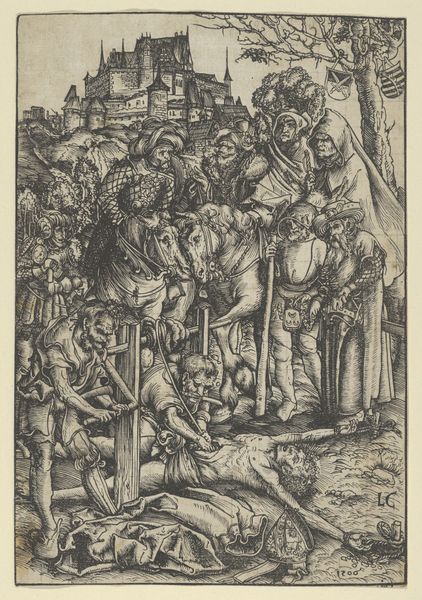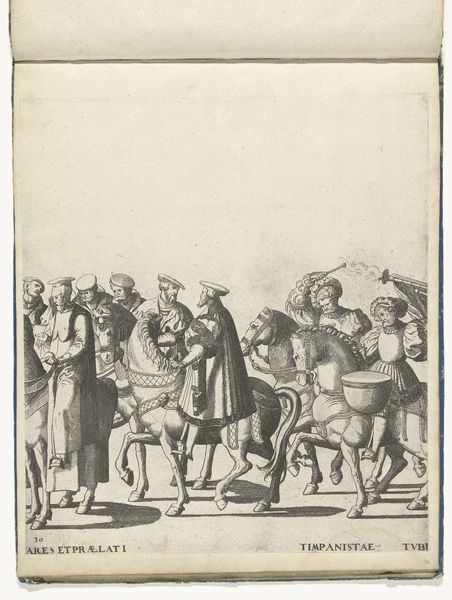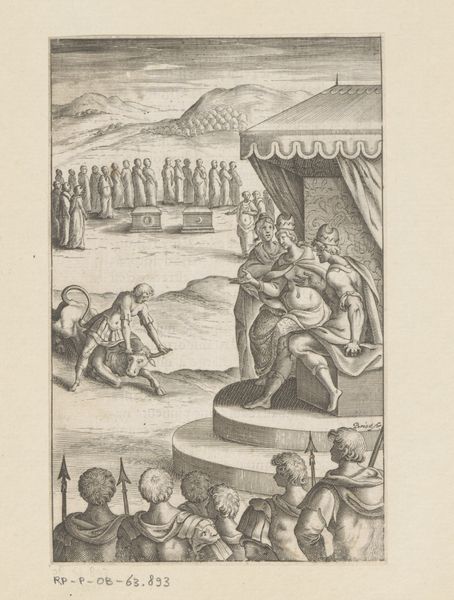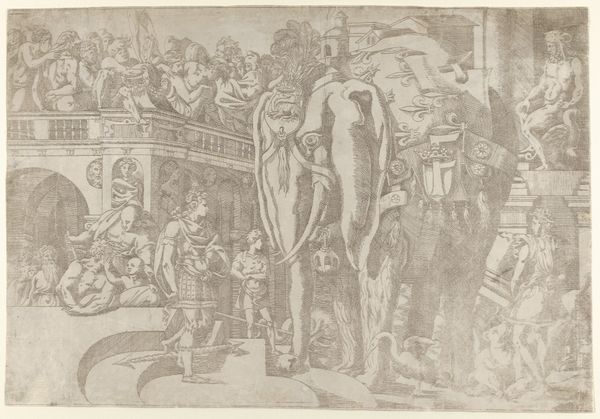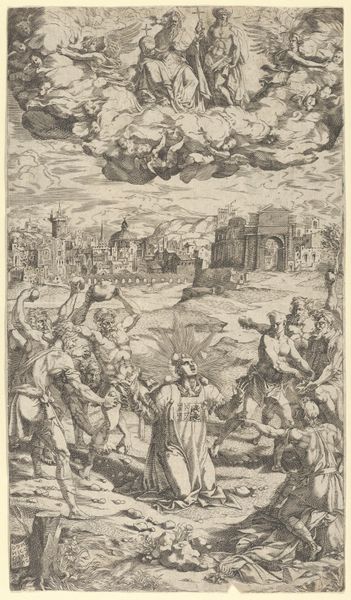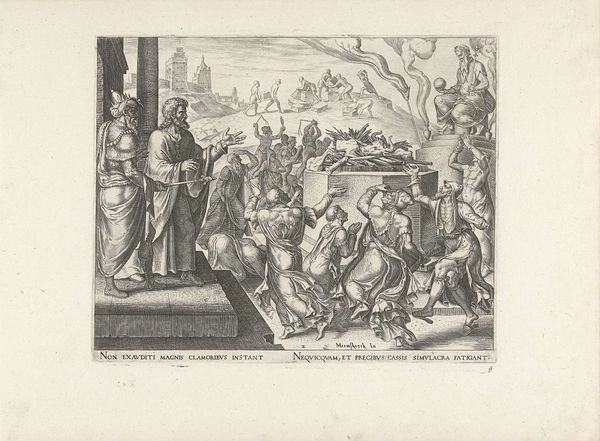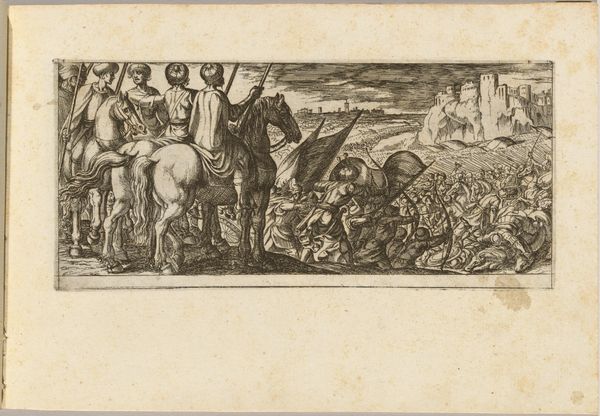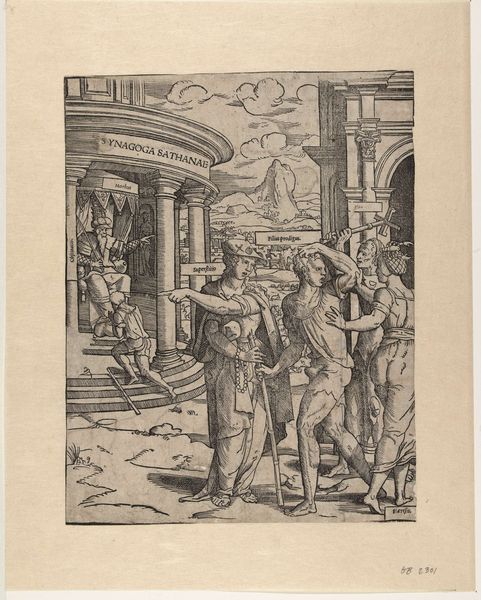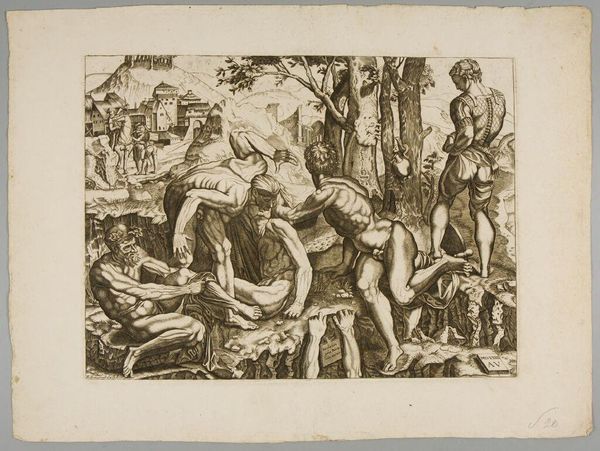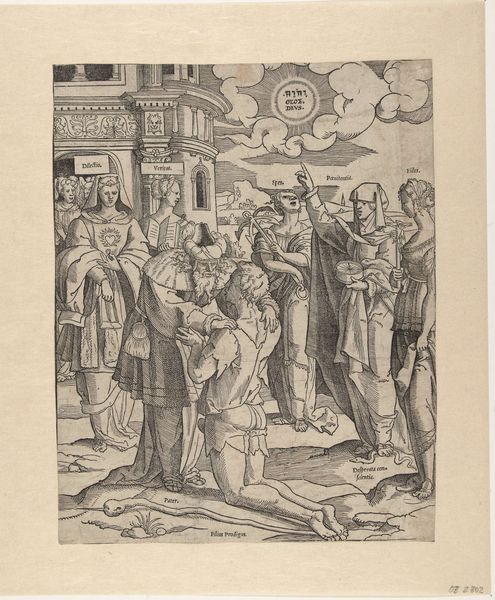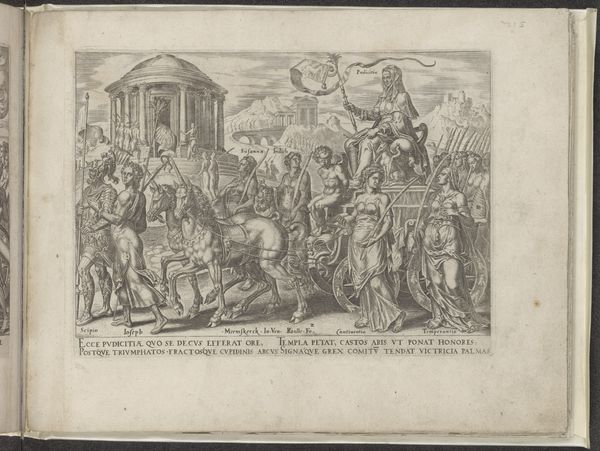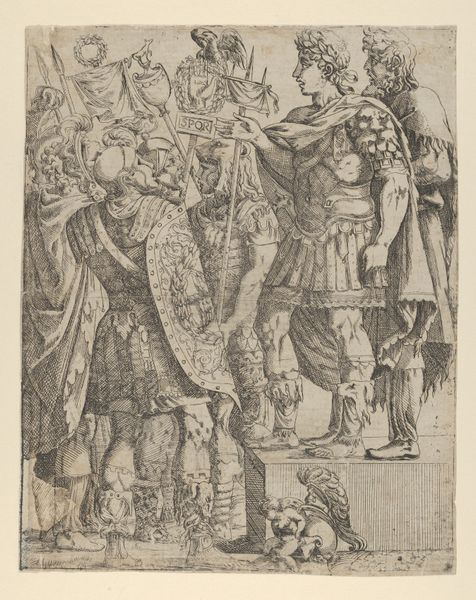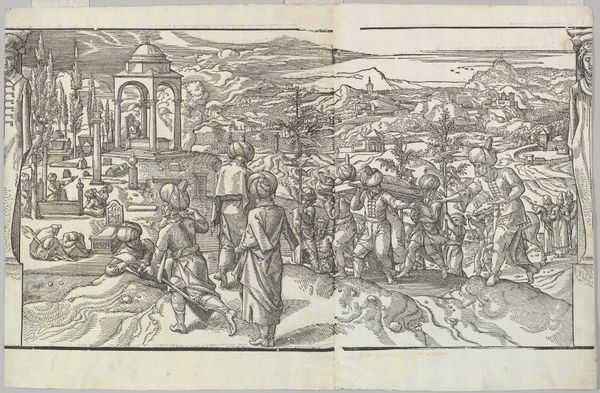
drawing, print, ink, engraving
#
drawing
#
ink drawing
#
allegory
#
pen drawing
# print
#
pen sketch
#
figuration
#
ink
#
line
#
history-painting
#
northern-renaissance
#
engraving
Dimensions: height 265 mm, width 205 mm
Copyright: Rijks Museum: Open Domain
Cornelis Anthonisz. created this woodcut, “The Prodigal Son Eating from the Swine Trough,” in the 16th century. It visualizes a biblical parable through the lens of the artist’s cultural and historical context. The print presents a complex allegory of sin and redemption. The Prodigal Son, having squandered his inheritance, finds himself in the depths of despair, reduced to sharing food with swine. This scene isn't just a depiction of poverty; it's a stark commentary on moral degradation and the consequences of straying from religious teachings. Anthonisz.’s work reflects the religious and social anxieties of his time. The Protestant Reformation was challenging established norms, leading to new ways of thinking about faith, morality, and individual responsibility. This print embodies the era’s intense focus on personal accountability and the possibility of repentance. "The story of the Prodigal Son is a story of hope," Anthonisz. might have said, "a reminder that even in the darkest times, redemption is possible." This image, with its intricate symbolism and dramatic narrative, captures the emotional and spiritual struggles of individuals navigating a world in flux. It invites us to reflect on our own journeys, our mistakes, and the enduring human capacity for change.
Comments
No comments
Be the first to comment and join the conversation on the ultimate creative platform.
